- Home
- Sebastian Faulks
War Stories
War Stories Read online
Table of Contents
Cover Page
About the Author
Also by Sebastian Faulks
Acknowledgements
Introduction
The Vintage Book of War Stories
BRUCE CHATWIN
Volunteers
LOUIS-FERDINAND CÉLINE
Could I Be the Last Coward on Earth?
DAVID MALOUF
Invisible Enemies
ERICH MARIA REMARQUE
How Long It Takes For a Man to Die!
A.D. GRISTWOOD
The Wasteland
STRATIS MYRIVILIS
The Beauty of the Battlefield
ERNEST HEMINGWAY
Going Back
WILLIAM BOYD
Narrow Escapes
SIEGFRIED SASSOON
My Own Little Show
PAT BARKER
Finished with the War
SEBASTIEN JAPRISOT
The Woman on Loan
ISAAC BABEL
Treason
LAURIE LEE
Thank God for the War
ANDRÉ MALRAUX
Crash
HEINRICH BÖLL
The Postcard
KAY BOYLE
Defeat
JEAN-LOUIS CURTIS
The Forests of the Night
ELIZABETH BOWEN
Everybody in London Was in Love
ALISTAIR MACLEAN
Fire on the Water
ROBERT HARRIS
Enigma
LOUIS DE BERNIÈRES
Send in the Clowns
JOHN FOWLES
Freedom
NORMAN MAILER
We You Coming-to-Get, Yank
JAMES JONES
No Choice
SHUSAKU ENDO
We Are About to Kill a Man
MARTIN BOOTH
Hiroshima Joe
LOUIS BEGLEY
Wartime Lies
ITALO CALVINO
Why Are the Men Fighting?
JOSEPH HELLER
They Were Trying to Kill Me
MICHAEL ONDAATJE
The Last Medieval War
JOHN HORNE BURNS
My Heart Finally Broke in Naples
WOLFGANG KOEPPEN
A Servant of Death
KURT VONNEGUT
A Nazi City Mourned at Some Profit
JAMES SALTER
The Hunters
TIM O’BRIEN
How to Tell a True War Story
PHILIP CAPUTO
Be Like the Forest
LARRY HEINEMANN
Paco’s Story
CHRISTOPHER J. KOCH
Welcome to Saigon
BAO NINH
The Jungle of Screaming Souls
CHRISTOPHER JOHN FARLEY
My Favourite War
Biographical Notes
Select Bibliography
Copyright Page
About the Author
Sebastian Faulks worked as a journalist for 14 years before taking up writing books full time in 1991. He is the author of The Girl at the Lion D’Or, A Fool’s Alphabet, Birdsong, The Fatal Englishman, Charlotte Gray and On Green Dolphin Street. After a period in France, he and his family now live in London.
Jörg Hensgen was born in Germany and studied at the universities of Wuppertal, Gottingen and Hamburg. He now lives in London and works as a publisher’s editor.
ALSO BY SEBASTIAN FAULKS
The Girl at the Lion D’Or
A Fool’s Alphabet
Birdsong
The Fatal Englishman: Three Short Lives
Charlotte Gray
On Green Dolphin Street
ACKNOWLEDGEMENTS
ISAAC BABEL: ‘Treason’ from Collected Stories, translated by David McDuff from an annotated edition by Efram Sicher (Penguin Books, 1994), © David McDuff 1994, reprinted by permission of the publisher; PAT BARKER: from Regeneration (Viking, 1991), © Pat Barker 1991; reprinted by permission of the publisher; LOUIS BEGLEY: from Wartime Lies (Macmillan, 1991), © Louis Begley 1991; HEINRICH BOLL: from The Silent Angel, translated by Breon Mitchell (Andre Deutsch, 1994), © Verlag Kiepenheuer & Witsch, 1992, English translation © Breon Mitchell 1994, reprinted by permission of Writer’s House, Inc. on behalf of the estate of the author; MARTIN BOOTH: from Hiroshima Joe (Hutchinson, 1985), © Martin Booth 1985, reprinted by permission of Gillon Aitken Associates on behalf of the author; ELIZABETH BOWEN: from The Heat of the Day (Jonathan Cape, 1949), © Elizabeth Bowen 1948, © renewed by Spencer Curtis and Graham Angus Watson, 1976, reprinted by permission of Curtis Brown Ltd, London, and Random House, Inc, New York; WILLIAM BOYD: from The New Confessions (Hamish Hamilton, 1987), © William Boyd 1987, reprinted by permission of Penguin Books Ltd; KAY BOYLE: ‘Defeat’ from Modern Reading 10, edited by Reginald Moore (Wells Gardner, Darton & Co, 1943–46), reprinted by permission of the Estate of Kay Boyle and the Watkins/Loomis Agency; JOHN HORNE BURNS: from The Gallery (Secker & Warburg, 1948), © The Estate of John Home Burns 1947: ITALO CALVINO: from The Path to the Spiders’ Nests, translated by Archibald Colquhoun, revised by Martin McLaughlin (Jonathan Cape, 1998; originally published in Italy as Il entiero dei nidi di ragno), © Giulio Einaudi, Editore, Torino, original translation © William Collins & Sons Co Ltd 1956, revised translation © Martin McLaughlin 1998, reprinted by permission of Random House UK Ltd; PHILIP CAPUTO: from ‘In the Forest of the Laughing Elephant’ in Exiles: Three Short Novels (Alfred A. Knopf, 1997), © Philip Caputo 1997, reprinted by permission of the publisher; LOUIS-FERDINAND CELINE: from Journey to the End of the Night, translated by Ralph Manheim (Calder Publications, 1988; originally published in France as Voyage au bout de la nuit by Editions Gallimard, 1932), © Louis-Ferdinand Céline 1932, 1934, 1952, 1988, translation © Calder Publications Ltd 1983, 1988, 1997, reprinted by permission of The Calder Educational Trust; BRUCE CHATWIN: from On the Black Hill (Jonathan Cape, 1982), © Bruce Chatwin 1982, reprinted by permission of Random House UK Ltd and Gillon Aitken Associates; JEAN-LOUIS CURTIS: from The Forests of the Night (John Lehmann, 1950; originally published in France as Les Fôrets de la Nuit by René Juillard, 1948); LOUIS DE BERNIÈRES: from Captain Corelli’s Mandolin (Secker & Warburg, 1994), © Louis de Bernières 1994, reprinted by permission of Random House UK Ltd; SHUSAKU ENDO: from The Sea and the Poison, translated by Michael Gallagher (Peter Owen, 1972; originally published in Japan as Umi to Dokuyaku in 1957), © Bungei Shunju Co Ltd, Tokyo 1958, translation © Peter Owen Ltd 1972, reprinted by permission of Peter Owen Ltd, London; CHRISTOPHER JOHN FARLEY: from My Favourite War (Granta Books, 1997), © Christopher John Farley 1996, reprinted by permission of the publisher; JOHN FOWLES: from The Magus (Jonathan Cape, 1966), © John Fowles 1966, 1977, reprinted by permission of Sheil Land Associates; A.D. GRISTWOOD: from The Somme (Jonathan Cape, 1927), reprinted by permission of Random House UK Ltd; ROBERT HARRIS: from Enigma (Hutchinson, 1995), © Robert Harris 1995, reprinted by permission of Random House UK Ltd; LARRY HEINEMANN: from Paco’s Story (Faber & Faber, 1987), © Larry Heinemann 1979, 1980, 1981, 1984, 1986, 1987; JOSEPH HELLER: from Now and Then: From Coney Island to Here (Simon & Schuster, 1998), © Joseph Heller 1998, reprinted by permission of International Creative Management and Alfred A. Knopf, a division of Random House, Inc; ERNEST HEMINGWAY: from A Farewell to Arms (Jonathan Cape, 1929), © Hemingway Foreign Rights Trust, reprinted by permission of Random House UK Ltd and Hemingway Foreign Rights Trust; SEBASTIEN JAPRISOT: from A Very Long Engagement, translated by Linda Coverdale (The Harvill Press, 1993; originally published in France as Un long dimanche de françailles by Editions Denoël in 1991), © Editions Denoël 1991, English translation © Farrar, Straus & Giroux Inc. and Harvill 1993, reprinted by permission of The Harvill Press; JAMES JONES: from The T
hin Red Line (Hodder & Stoughton, 1998), © James Jones 1972, reprinted by permission of the publisher; CHRISTOPHER J. KOCH: from Highways to a War (William Heinemann, 1995), © Christopher J. Koch 1995, reprinted by permission of Random House UK Ltd; WOLFGANG KOEPPEN: from Death in Rome, translated by Michael Hoffman (Penguin Books, 1994; originally published in Germany as Der Tod in Rom in 1954), © Wolfgang Koeppen 1954, translation © Michael Hoffman 1992, reprinted by permission of Penguin Books Ltd; LAURIE LEE: from A Moment of War (Viking, 1991), © Laurie Lee 1991, reprinted by permission of the publisher; ALISTAIR MACLEAN: from HMS Ulysses (Collins, 1955), copyright Devoran Trustees Ltd 1955; NORMAN MAILER: from The Naked and the Dead (Flamingo, 1993), (c) Norman Mailer 1949, reprinted by permission of The Wylie Agency (UK) Ltd; DAVID MALOUF: from Fly Away Peter (Chatto & Windus, 1982), © David Malouf 1982, reprinted by permission of Random House UK Ltd; ANDRÉ MALRAUX: from Days of Hope, translated by Stuart Gilbert and Alastair MacDonald (Penguin Books, 1970; originally published in France as L’Espoir in 1938), © The Estate of André Malraux 1938, reprinted by permission of the publisher; STRATIS MYRIVILIS: from Life in the Tomb, translated by Peter Bien (Quartet Books, 1987), translation (c) The Trustees of Dartmouth College, reprinted by permission of Quartet Books Ltd and the University Press of New England; BAO NINH: from The Sorrow of War, English Version by Frank Palmos from the original translation by Phan Thanh Hao (Secker & Warburg, 1994; originally published as Thân Phân Cua Tinh Yên by Nhà Xuät Ban Hoi Nha Van (Writers’ Association Publishing House), Hanoi, 1991), English translation (c) Martin Secker & Warburg Ltd 1993, reprinted by permission of Random House UK Ltd; TIM O’BRIEN: ‘How to Tell A True War Story’ in The Things They Carried (HarperCollins, 1990), (c) Tim O’Brien 1990, reprinted by permission of the publisher; MICHAEL ONDAATJE: from The English Patient (Bloomsbury Publishing, 1992), (c) Michael Ondaatje 1992; ERICH MARIA REMARQUE: from All Quiet on the Western Front, translated by Brian Murdoch (Jonathan Cape, 1994; first published in Germany as Im Westen nichts Neues by Ullstein, 1929), (c) The Estate of the late Paulette Remarque 1929, translation (c) Jonathan Cape 1994, reprinted by permission of Random House UK Ltd; JAMES SALTER: from The Hunters, first published in Great Britain by The Harvill Press in 1998, (c) James Salter 1956 and 1997, reprinted by permission of The Harvill Press and Counterpoint Press, a member of Perseus Books, L.L.C.; SIEGFRIED SASSOON: ‘Finished with the War’, reprinted in Regeneration by Pat Barker (Viking, 1991), copyright Siegfried Sassoon; and from Memoirs of an Infantry Officer (Faber & Faber, 1930), copyright Siegfried Sassoon, reprinted by permission of George Sassoon; KURT VONNEGUT: ‘A City Mourned at Some Profit’ from Palm Sunday (Jonathan Cape, 1981), (c) The Ramjac Corporation 1981, reprinted by permission of Random House UK Ltd.
Every effort has been made to trace or contact all copyright holders. The publishers would be pleased to rectify any omissions brought to their notice at the earliest opportunity.
INTRODUCTION
THIS IS A book of extracts from works of fiction set in the wars of this century, and, when you come to think about it, the strangest thing about such books is that there are not more of them. Once the young literary form of the novel had decided, 250 years or so ago, that it would do more than tell stories, that it was uniquely suited by its access to inward psychological development and boundless narrative to explore ‘human nature’ and that that would be, for many writers and readers, its highest aim, then you would have thought that most ambitious novelists would have looked to see what conditions of existence offered them the most extreme and therefore, presumably, most rewarding circumstances for their study. War, surely, would have been the answer. If the writing of fiction had been undertaken not by writers but by scientists, they would certainly have seized on the dramatic potential of armed conflict for their experiments. These, they would have argued, are the ideal laboratory conditions for this examination of humanity; only under these intense pressures, both on the battlefield and behind it, both in the generations that fought and in their children, would the transcendent or outer qualities of humankind become visible.
Artists, however, aren’t like that. Writers write what they can; they write books about the stories or people that have moved them, without analysing, necessarily, the effects their work will have on their readers. They certainly don’t view it as scientific enterprise in which the rewards are bestowed on those who work at the frontiers of knowledge. Perhaps they should, but they don’t; and the other deterrent fact about war as a subject or background for fiction is that it is so disgusting. Which writer would willingly immerse himself for two or three years in this drab world of units and numbers, of industrial metal and meaningless death, without women or children or costume or domestic drama or even interesting food and drink? Laboratory of souls maybe, they would reply, but what a repellent and austere one.
Well, there are ways round that problem; in fact there are more ways of disarming a reader’s natural disinclination to read about such things than of overcoming the writer’s reluctance to write about them. I remember the reactions of friends and colleagues who asked me what I was writing in the early 1990s when I told them it was a novel set in the First World War. They thought I was insane. No one (or no one they could think of) had written a novel in England about this war since . . . well, since Robert Graves – or perhaps that wasn’t a novel. Anyway, it would be impossible to improve on the great books of the 1920s; war was a subject for decrepit old men in Aldershot bungalows; and, outside the British Legion library, it would have no sale at all. Oddly enough when the novel, Birdsong, came out in 1993 and met with some success, many of the same people assured me it was because I had ‘jumped on a First World War bandwagon’.
It does seem that war has to some extent come back into play as a background or setting for serious fiction, though writers today are unlikely to follow the direct course to the Front of Erich Maria Remarque or even the twisting paths of Evelyn Waugh, whose Sword of Honour trilogy fully digested a personal experience of combat before setting it in a social context. They will look for different angles. The fall-out, the repercussions, the social eddies that begin from the hideous collisions of metal and flesh; the historical, post-Freudian, even the comic or ironic dimensions: these are likely to be of interest to modern writers, especially as the century nears its end and the rolling numbers of the millennial clock induce a spasm of last-minute retrospect. How did we get here? Has ever there been such a century for killing? What did it mean? Have we really thought it through?
Pat Barker, Sebastien Japrisot, William Boyd, Louis de Bernières and others have recently used war for their own fictional ends; it serves a purpose in a wider artistic scheme. But one of the first things that will strike readers of this anthology is the high proportion of novelists who are drawing on their own experiences, recycled or recrafted to varying degrees, and the low proportion who have gone in with the pure, disinterested eye of fiction. Many writers have used the form of the novel as little more than a convenience for what is at heart a documentary account of what happened to them. We have tried, on the whole, to favour full-blown fiction over lightly fictionalised autobiography, though there were instances of fact-based fiction where the writing itself was so compelling (Sassoon, Tim O’Brien), so successfully transformed (Hemingway, Norman Mailer) or else dealt with an experience or a conflict that would otherwise have been unrepresented (Malraux) that we were glad not to be inflexible.
There seems little doubt that the main impulse of a writer such as A.D. Gristwood was a documentary one. He wanted to get down on paper what the Great War was like, and if that meant inventing a perfunctory story and changing a few names, so be it. Later generations have been thankful for what he did, and such purpose can give real power to the writing, as it did to the overtly political novel Under Fire, which its author, Henri Barbusse, hoped would help to stop the fighting. Witnessing what no human being had ever seen before, however – the slaughter of ten million men for no apparent reason – proved an experien
ce difficult to transmute into fiction, and there are not many outstanding novels to emerge from 1914–18. Exceptions include books by Henry Williamson, Frederic Manning, R.H. Mottram and Richard Aldington; unfortunately, Ford Madox Ford’s Tietjens tetralogy, the most highly esteemed of all, defeated our attempts to find an extract that was both representative and self-contained.
In compiling this anthology we were aware of the attraction of good writing for its own sake but also of the need to be to some extent representative – to vary the contents by nationality of author, by conflict, by type of combat (by air and sea as well as by land), but above all by tone. There is no shortage of novels that describe bullet wounds and bombardments; there are not so many that talk about what was going on elsewhere. For this reason we were particularly pleased to include extracts from Elizabeth Bowen, Jean-Louis Curtis and John Home Burns. Where it seemed possible, we looked to include humorous writing (Louis de Bernières, Laurie Lee, Christopher John Farley), or incidents that illuminated peripheral or contigent aspects of war – Wolfgang Koeppen’s Nazi on the loose in Rome, for instance, Stratis Myrivilis’s unashamed description of the beauty of firepower or Kurt Vonnegut’s wry account of literary profiteering.
With Vonnegut and Joseph Heller, we have cheated. We wanted to include them both out of admiration for their writing and because the theatres of war they wrote about (Dresden and the US airforce in the Mediterranean, respectively) were intriguing. However, we feared to bore readers with writing that would be too familiar to them, so in these two instances (only) we have taken extracts from the writers’ accounts of their novels rather than from the novels themselves.
Traditionally, the art of the anthologist is one of compromise, of steering a course between the Scylla of over-familiarity and the Charybdis of too many unknowns. It is something like that of the music promoter who will use his star attractions to ‘break’ new acts and who will also make sure that while the main act plays songs from their new album they also include their greatest hits. Our rule of thumb was that if the Rolling Stones were going to play, they should give it all they’ve got; and if your curiosity does not flare up at the sight of Hemingway’s name, I hope at least you won’t deny yourself the intense pleasure of re-reading the extract in question.

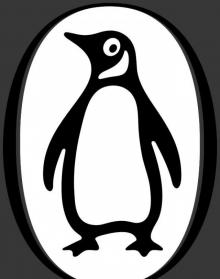 Devil May Care
Devil May Care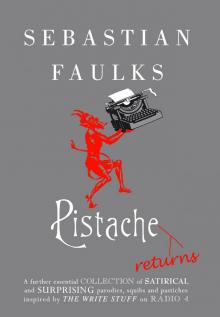 Pistache Returns
Pistache Returns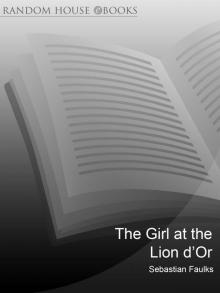 The Girl at the Lion D'Or
The Girl at the Lion D'Or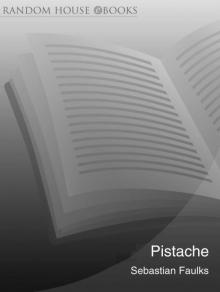 Pistache
Pistache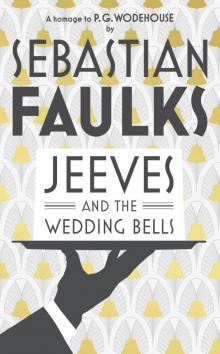 Jeeves and the Wedding Bells
Jeeves and the Wedding Bells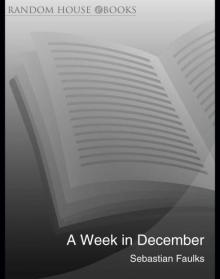 A Week in December
A Week in December The Vintage Book of War Stories
The Vintage Book of War Stories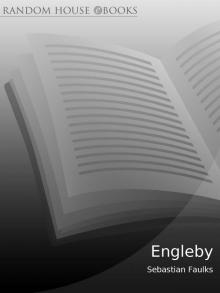 Engleby
Engleby Birdsong
Birdsong Jack Firebrace's War
Jack Firebrace's War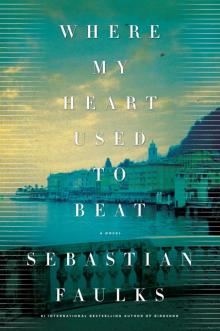 Where My Heart Used to Beat
Where My Heart Used to Beat A Possible Life
A Possible Life The Fatal Englishman: Three Short Lives
The Fatal Englishman: Three Short Lives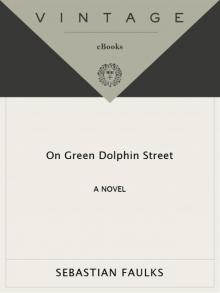 On Green Dolphin Street
On Green Dolphin Street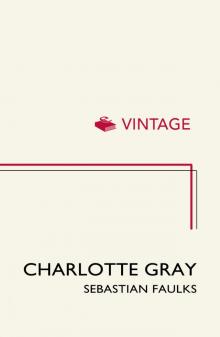 Charlotte Gray
Charlotte Gray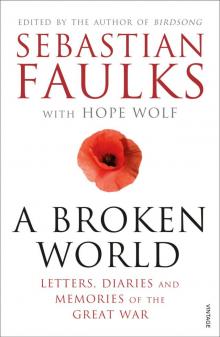 A Broken World: Letters, Diaries and Memories of the Great War
A Broken World: Letters, Diaries and Memories of the Great War Human Traces
Human Traces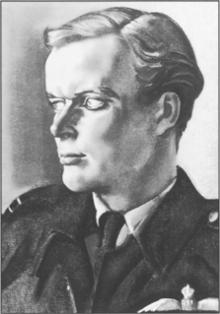 The Fatal Englishman
The Fatal Englishman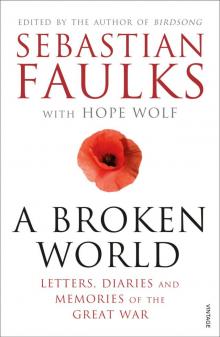 A Broken World
A Broken World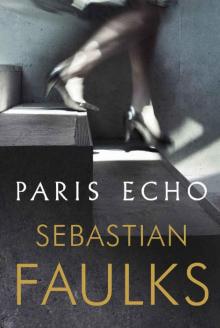 Paris Echo
Paris Echo War Stories
War Stories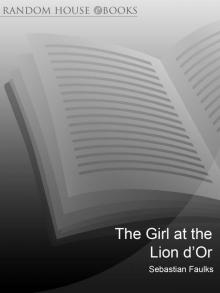 Girl At the Lion d'Or
Girl At the Lion d'Or